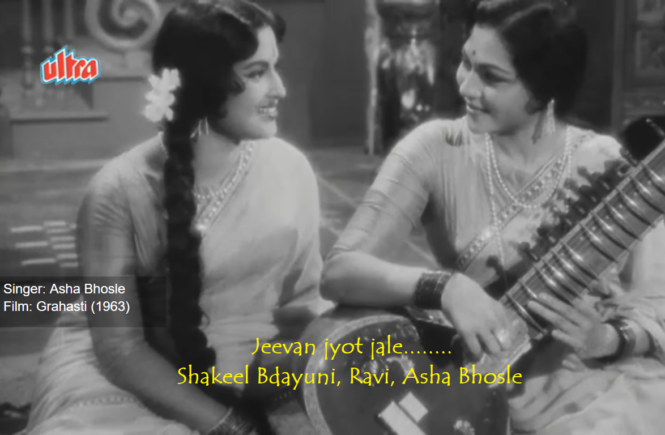Raaga Based Song of the Day: Jeevan jyot jale….
Raag Sohani, Tal Tintal
Today sees me returning to my favourite lyricist Shakeel Badayuni after a long time. And, he is with Ravi here – the composer and music director with whom he got two of his three Filmfare Awards for Best Lyricist.
Today is the third day that I am giving you a song based on Raag Sohani. The first time I gave you a Sohani based song was, I hope, a treat for you since I gave you Ustaad Bade Ghulam Ali Khan‘s rendition of it: Prem jogan ban ke, also penned by Shakeel for K Asif’s Mughal-e-Azam; however, composed by Naushad (Please see: ‘Raaga Based Song Of The Day #42’). Exactly 42 more songs later, I gave you another song based on this raag: Jhoomati chali hawa yaad aa gaya koi; this time in Tal Dadra. This was penned by a great lyricist Shailendra on a composition by SN Tripathi in Tripathi’s own directed 1962 movie Sangeet Samrat Tansen (Please see: ‘Raaga Based Song Of The Day #84’).
We have completed ninety-one days of Raaga Based Songs of the Day. Our first post in the series was titled ‘Raaga Based Song Of The Day #1’ and the song was a Mohammad Rafi and Lata Mangeshkar song from the 1970 Shakti Samanta movie Pagla Kahin Ka: Tum mujhe youn bhula na paoge. It is in Raag Jhinjhoti, Tal Kaherava.
Our ninety-first post or the last post was titled ‘Raaga Based Song Of The Day #91’ and the song was an Asha Bhosle song from the 1966 Shailendra production and Basu Bhattacharya movie Teesri Kasam starring Raj Kapoor and Waheeda Rehman. It is in Raag Kalyan, Tal Dadra.
This blog has a number of posts on Raaga based songs in Hindi movies titled similarly; for example: ‘The Best Raaga Based Songs in Hindi Movies – Raaga Bhairavi – Part II’.
In the last ninety days of sharing Raaga based songs of the day, I have given you songs based on Raag Jhinjhoti, Gara, Bhimpalasi, Madhuvanti, Shivaranjani, Bihag, Pahadi, Sarang, Pilu, Bhairavi, Khammaj, Charukesi, Kalyan or Yaman, Desh, Malgunji, Kirwani, Kedar, Bageshri, Megh Malhar, Bhupali, Ahir Bhairav, Malkaush, Mand, Adana, Kafi, Rageshri, Jaunpuri, Tilang, Janasammohini, Chayanat, Shuddha Kalyan, Gaur Sarang, Jogiya, Asavari, Maru Bihag, Durga, Lalit, Puria Dhanashri, Bhinna Sahdja, Sohani, Multani, Patdeep, Jaijaiwanti, Tilak Kamod, Hemant, Basant Mukhari, Gujri Todi, Kalavati, Hamir, Bhatiyar, Gawati, Shyam Kalyan, Gorakh Kalyan, Madhamat Sarang, Manj Khammaj, Darbari Kanada, Vibhas, Shankara, Bahar, Nand and Mian Ki Malhar; making it a total of 61 raagas. The raagas that have been repeated so far are Pahadi, the raaga of my home place in the Himalayas, Maru Bihag, Raag Kirwani, Jhinjhoti, Bhairavi, Gara, Basant Mukhari, Malkauns, Bhairavi, Mand, Sohani, Madhuvanti and Shivaranjani. Today, I am repeating Raag Sohani for the third time.
Sohani, also known as Sohni and Sohini, is a raaga that belongs to Marwa Thaat. Its Jati is Audhav – Shadav, ie, five notes in Aaroha and six in Avroha. The time for performing this raaga is in the wee hours of the morning or last prahar of the night, that is, from 3 to 6 AM. In the Marwa thaat, Sohani is similar to Marwa and Puria raagas. In the Poorvi thaat, it is similar to Basant.
In the wee hours of the morning, you would find the atmosphere of dew. Hence, the mood of the raaga is the moist atmosphere that prevails in a tranquil and silent night.
Some of the other songs composed in Raag Sohani are:
| 1. 2. 3. 4. 5. 6. 7. 8. 9. 10. 11. |
Prem Jogan Ban Ke Jhoomti Chali Hawa Kuhu Kuhu Bole Jeevan Jyot Jale Saawan Ban Gaye Nain Muft Hue Badnaam Jhoote Zamane Bhar Ke Bedardi Nazarein Mila Ke Sajan Tori Preet Naina Hai Jadoo Bhare Payal Chham Chham |
Mughal-E-Azam Sangeet Samrat Tansen Suvarna Sundari Grihasthi Karorpati Baraat Musafir Khana Aji Bas Shukriya Sagai Bedard Zamana Kya Jaane Basant |
Bade Ghulam Ali Khan Mukesh Lata, Rafi Asha Asha Mukesh Nirmala Devi, Rafi Lata Asha Mukesh Asha |
I had given you an introduction to Tal (musical measure) on the second day itself. Some of you would recall that I had mentioned that Tal, Taal or Tala is a word that is variation of the word Taali (Clap). Before the advent of Tabla, the standard method of keeping the musical measure was with the clapping or tapping of one’s hand on the arm or thigh. Indeed, now that we have Tabla, this beat is still maintained by clapping and waving of hands. If you recall, I had also mentioned that whilst the Raaga sets the mood, time of day and season of a composition, Tal constitutes the time-cycle. Therefore, a Raaga and Tal go hand in hand. On the 14th Raaga Based Song of the Day, was the only occasion when we didn’t have a Raaga (Kalyan) accompanied by a Tal since the entire composition of Lagata nahin hai dil mera was in Alaap.
The rhythmic hand gestures used to denote Tal are called Kriyas. If you recall, I laid emphasis on something called Vibhag or sections or angas or parts of a Tal. In Hindustani music, the first beat of a Vibhag is Tali (Clap), whilst the empty beat (Khali) is indicated is indicated by the sideways wave of the dominant clapping hand. And thus, you would recall, I represented the Tal for you with Claps and Waves.
We had also learnt that a Tal doesn’t have a fixed tempo or laya. Hence, we had learnt three different tempos: Vilambit (delayed or slow), Madhya (medium) and Drut (fast).
Teental or Tintal is the most popular Tal in North India/Hindustani Music. It is also the most symmetrical. It has 16 beats in four vibhags. The period between every two beats is the same. We already know that the first beat is called Sam (to be pronounced like the English word Sum) and the ninth beat is Khali or empty. To perform the kriya of Tintal, one has to clap on the first beat, clap on the 5th beat, then waves on the 9th beat and lastly again claps on the 13th beat; these three claps give the rhythm its name: Teental or Tintal.
| dha | dhin | dhin | dha | | | dha | dhin | dhin | dha | | |
| x | 2 | ||||||||
| dha | tin | tin | ta | | | ta | dhin | dhin | dha | | |
| o | 3 |
This can also be shown using the following figure:
| Taal signs | X | 2 | 0 | 3 | ||||||||||||
| Maatra | 1 | 2 | 3 | 4 | 5 | 6 | 7 | 8 | 9 | 10 | 11 | 12 | 13 | 14 | 15 | 16 |
| Bols | dha | dhin | dhin | dha | dha | dhin | dhin | dha | dha | tin | tin | ta | ta | dhin | dhin | dha |

The song I have taken for you today is from the 1963 SS Vasan production and Kishore Sahu movie Grahasti starring Ashok Kumar, Manoj Kumar, Rajshree, Nirupa Roy and Mehmood. As I said, it was penned by Shakeel Badayuni, composed by Ravi and sung by Asha Bhosle. “Grahasti was the first film to “start the trend” of family dramas being made in South India. The story revolves around Harish Khanna (Ashok Kumar) who leads a dual life, having two sets of families in different cities. The effect the exposure has on him and his family forms the basis of the story.”
The music composer Ravi won an award for the song Jeevan Jyot Jale. It was adjudged the Best Classical Composition in the Sur-Singar Film Awards for 1963. He won the Swami Haridas Award, while Asha Bhosle won the Mian Tansen Award as the singer. The song was cited as the best song of 1963 out of the 544 songs released that year from a total of 77 films. Of course, Ravi has won the Filmfare Award only twice out of seven nominations and in 1964 (the awards after the movie was made), he lost out to Roshan for Taj Mahal and joined other losers: Naushad Ali for Mere Mehboob and Shankar Jaikishan for Dil Ek Mandir.
I don’t have to give you more about Shakeel Badayuni since this blog has as many as sixteen posts about and involving him. I won’t even give you a list of my favourite songs penned by him since all his songs and ghazals are my favourite. I indulge in writing poetry in Hindustani/Urdu and many of these are on this blog. My fervent wish is that sometime or the other I shall write something as good as Shakeel Badayuni.
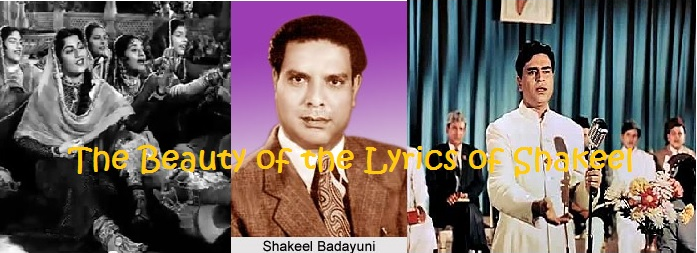
For Music Director Ravi to compose one of the finest raaga based songs was nothing short of miracle since he had no formal education in Raagas at all. He learnt music by listening to his father sing bhajans. He worked as an electrician to support the family whilst learning harmonium and other classical instruments entirely on his own. He shifted to Bombay to become a singer in the movies and continued to work as an electrician for the railways. How tough life was for him can be made out from the fact that he had no house/room in Bombay and he used to sleep at Malad Railway Station.
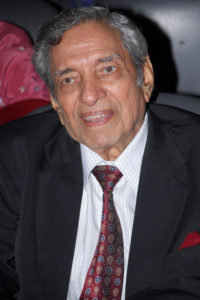 Ravi is my namesake and my favourite singer Hemant Kumar gave him a break in 1952 to sing the vocals of his composition Vande Mataram in the 1952 Hemen Gupta movie Anand Math. Within three years he emerged as an independent music director for Albeli, a 1955 movie starring Pradeep Kumar and Geeta Bali. Ravi got his first Filmfare Award for the 1962 movie Gharana. Two years before that he gave Shakeel his first Filmfare Award for Chaudhvinh Ka Chand. For a musician without any formal training in music, Ravi came a long way. Some of the Sitar based songs of Ravi are classics such as Tora man darpan kehlaaye for the 1965 movie Kaajal (Please see: ‘Songs That Tug At Your Emotions – Song #9’).
Ravi is my namesake and my favourite singer Hemant Kumar gave him a break in 1952 to sing the vocals of his composition Vande Mataram in the 1952 Hemen Gupta movie Anand Math. Within three years he emerged as an independent music director for Albeli, a 1955 movie starring Pradeep Kumar and Geeta Bali. Ravi got his first Filmfare Award for the 1962 movie Gharana. Two years before that he gave Shakeel his first Filmfare Award for Chaudhvinh Ka Chand. For a musician without any formal training in music, Ravi came a long way. Some of the Sitar based songs of Ravi are classics such as Tora man darpan kehlaaye for the 1965 movie Kaajal (Please see: ‘Songs That Tug At Your Emotions – Song #9’).
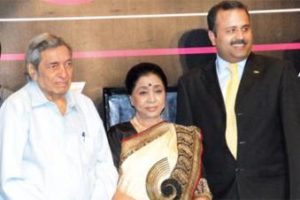
As far as Asha Bhosle, the singer of this song is concerned, I am one who thinks of Asha Bhosle as a complete singer and not just a singer of sexy and sensuous numbers. Have a look at some of the sad and serious numbers that she has sung: Phir thes lagi dil mein phir yaad ne tadpaaya (Kashmir Ki Kali), Ye khaamoshiyan ye tanhaayiyan mohabbat ki duniya hai kitani jawan (Ye Raaste Hain Pyaar Ke), Wo subah kabhi to aayegi (Phir Subah Hogi), Tang aa chuke hain kashm-e-kash zindagi se ham (She sang the same song of Sahir Ludhianvi in 1958 movie Lighthouse as was sung by Mohammad Rafi in 1957 movie Pyaasa), Sun le pukaar aayi (Phool Aur Patthar), Sawan aaye ya na aaye (Dil Diya Dard Liya), Sach huye sapne tere (Kaala Bazaar), Raaton ko chori chori bole mera kangana (Mohabbat Zindagi Hai), Raat ke hamsafar thak ke ghar ko chale (An Evening In Paris), Puuchho na hamen ham unake liye kyaa kyaa nazraane laaye hain (Mitti Mein Sona), Piya piya na laage mora jiya (Phagun), Mujhe gale se laga lo bahut udaas hoon main (Aaj Aur Kal), Mere bhaiya mere chanda mere anmol ratan (Kaajal), Main jab bhi akeli hoti hoon tum chupake se aa jaate ho (Dharmputra), Koi aaya dhadkan kehati hai (Lajwanti), Koi shikwa bhi nahin koi shikaayat bhi nahin (Neend Hamari Khwaab Tumhaare), Kali ghata chhaye mora jiya tarsaaye (Sujata), Jab chali thandi hawa (Do Badan), Jaa jaa re jaa saajana (Adaalat), Ik pardesi mera dil le gaya (Phagun), Ham intezzar karenge tera qayaamat taq (Bahu Begum), Ham tab simat ke aapki baahon mein aa gaye (Waqt), Do ghadi woh jo paas aa baithe (Gateway Of India), Dil ki tamanna thi masti mein (Gyaarah Hazaar Ladkiyan), Dekh hamen awaaz na dena (Amardeep), Chain se hamako kabhi aap ne jeene na diya (Pran Jaaye Pazr Vachan Na Jaaye), Chand sa mukhada kyun sharmaaya (Insaan Jaag Uthja), Bachchon tum taqdeer ho kal ke Hindostan ki (Didi), Aur is dil mein kyaa rakha hai (Imaandaar), Ashkon mein hamane tasveer banayi hai (Dekh Kabira Roya), Ab ke baras bhej bhaiya ko babul (Bandini), Aapse maine meri jaan mohabbat ki hai (Ye raat phir na aayegi), and Aaj ki raat badhi shok badhi natkhat hai (Nai Umr Ki Nai Fasal).
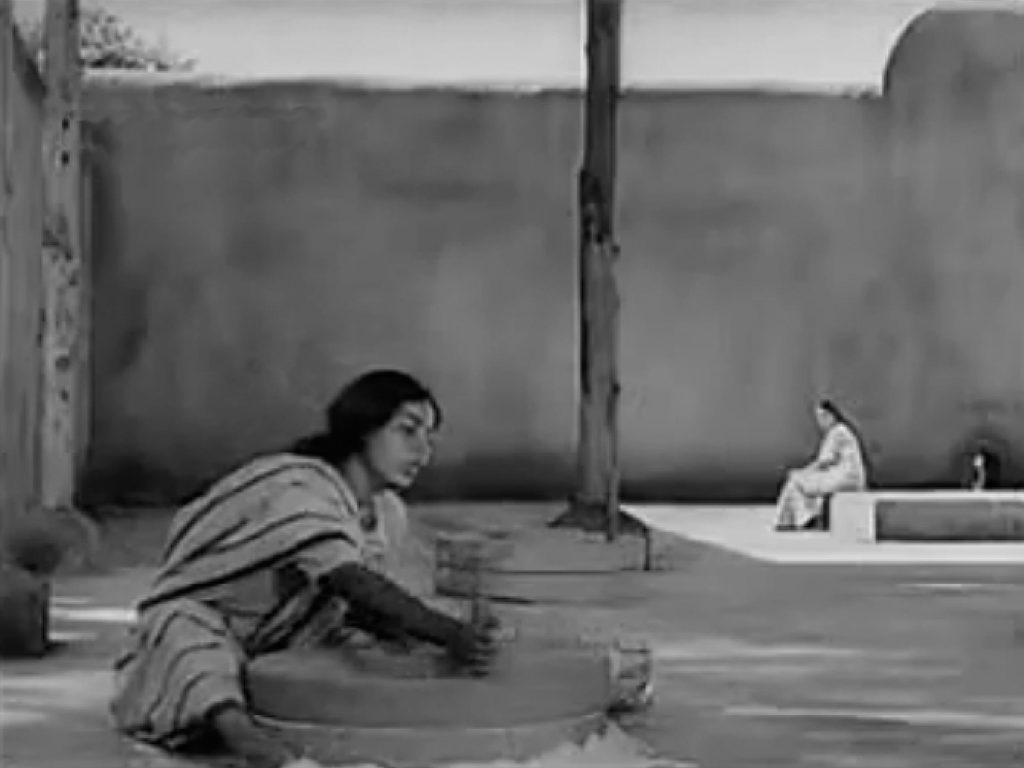
Before we actually take up the song, first, lets take up the value added learning of today. From the last ten times we started learning about some of the leading personalities in Indian Classical Music or Shastriya Sangeet. The first one that we took up was Ustaad Asad Ali Khan, the finest Rudra Veena player in the country. Then we took up Pandit Hari Parsad Chaurasia, the greatest Bansuri player in the country. Then we talked about Ali Akbar Khan, the greatest Sarod player in the country. Then we took up Pandit Ravi Shankar, the greatest Sitar player in the world. Then we took up the greatest classical singer in the country (of Carnatic tradition): MS Subbulakshmi. Then, we took up the greatest classical singer in the country (of Hindustani tradition): Pandit Bhimsen Joshi. Then, we learnt about the Shehnai maestro Ustad Bismillah Khan. Then, we learnt about Annapurna Devi, a great Surbahar (bass sitar) player of Hindustani Classical Music. Thereafter, we took up Pandit Shiv Kumar Sharma, the grestest Santoor player in the country. Then we learnt a little more about Ustaad Alla Rakha Qureshi or simply Alla Rakha, the Tabla Maestro and father of Ustaad Zakir Hussain. And finally, we learnt about the master and one of the pioneers of fusion: Anand Shankar.
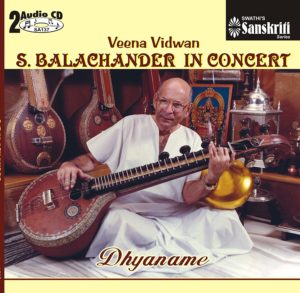
Tonight, we shall take up a personality who represents both the worlds: that of classical Veena player as well as that of an accomplished filmmaker: Sundaram Balachander. He was born on 18 Jan 1927 to V Sundaram Iyer and Parvathi alias Chellamma in Mylapore, Madras Presidency. British India. His elder brother S Rajam was a well-known singer and teacher, and a gifted artist as well. His elder sister is S Jayalakshmi (who later acted as MK Thyagaraja Bhagavathar’s pair in Sivakavi), S Saraswathi was his younger sister, followed by the twins S Karpagam and S Gopalaswami.
From the age of five, Sundaram Balachander showed an interest in classical music and his first musical attempt was with the kanjeera, which is a small, circular percussion instrument. Within a year he was accompanying his brother and other musicians on the kanjeera during regular concert engagement, in Sabhas, in temple festivals, in devotional congregations, etc. From age six on his career achieved steady growth. He also learnt to play tabla, mridangam, harmonium, bulbul tarang, dilruba, and shehnai. On the sitar, Balachander was a fully fledged solo concert artist by age twelve and it is interesting to note that he performed South Indian Carnatic music on that instrument. And then Veena entered his life. Falling in love with the instrument, from the beginning he felt that it deserved his undivided attention and every skill. Without a tutor or master to guide him, within two years he was an established concert veena player.
He travelled all over the world, and won international fame as an instrumentalist of rare repute. The famous electric bassist Mark Egan cites Balachander as a major influence on his music. At one time, Balachander held the record for cutting the highest number of records (21 in India, and 6 outside India). The 12-LP set encompassing the 72 melakartas is a piece of work that has no parallel. Magic Music of India (World Pacific), Sounds of the Veena (WPS), Veena Virtuoso (World Music Library), Immortal Sounds on the Veena (Oriental Records), veeNa (EMI), The Music of the Veena (JVC, Japan), and The Music of India (Nonesuch Explorer) are some his releases that have been best-sellers worldwide.
He is also known for his work in cinema, his writing and his polemics. Balachander was awarded the Padma Bhushan in 1982.
As far as movies are concerned, he began as a child artist in Tamil film Seetha Kalyanam in 1934 as a child musician in Ravana’s court. His other Tamil movies that he acted include Devaki (1951), Rajambal (1951), Rani (1952), Inspector (1953), Penn (1954), Kodeeswaran (1955), Doctor Savitri (1955) and Maragadham (1959). In addition to acting and composing film music, from the late 1940s to the mid-1960s Balachander directed a number of Tamil films. He had acted, directed, composed music and sang in Idhu Nijama (1948), En Kanavar (1948) and Kaidhi (1951). A number of Telugu movies followed. In the 1960s, he formed his own production company called SB Creations where he made 3 movies, produced, directed, composed music and sang in Avana Ivan (1962), Bommai (1964) and Nadu Iravil (1965).
Ladies and gentlemen, please enjoy in Raag Sohani Taal Tintal, Asha Bhosle sing a composition of Ravi on the lyrics of Shakeel Badayuni in the 1963 SS Vasan Production and Kishore Sahu directed movie Grahasti: Jeevan jyot jale…..
जीवन ज्योत जले
कोउ न जाने कब निकसे दिन
और कब रात ढले
जीवन ज्योत जले …
भोर भये तो मन मुस्काये
सँझ भये तो नीर बहाये
एक पल मान करे संसारी
एक पल हाथ मले
जीवन ज्योत जले …
https://www.youtube.com/watch?v=UemDW8KonE8
We have intended to learn about Raaga based music whilst we entertain ourselves with Raaga based songs. So, lets, once again, take stock of our collective learning so far:
- On the first day we learnt about the Raaga system devised by Pandit Vishnu Narayan Bhatkhande, which is the prevalent system in Hindustani Classical Music and based on ten Thaats.
- On the second day we learnt about Tal or Taal.
- On the third day we learnt about characteristics of Raagas that included Swar, Jati, Thaat, Arohana and Avarohana, Vadi, Samvadi and Pakad.
- On the fourth day, we learnt about Sargam.
- On the fifth day, we learnt about notations used in Indian classical music or simply Swar Lipi.
- On the sixth day, we learnt about the Ras (sentiments) that Raagas evoke.
- On the seventh day, we learnt about various types of Swar: Shuddha, Achal, Vikrut, Komal and Teevra.
- On the eighth day, we learnt the parts of a composition in Indian Classical Music.
- On the ninth day, we learnt the names of some of the popular instruments used in Indian Classical Music.
- On the tenth day, we learnt about the sources of names of Raagas.
- On the eleventh day, we learnt about why Bhairavi is the first raag to be taught to beginners and also why it is the last in a performance.
- On the twelfth day, we learnt about Khammaj Thaat.
- On the thirteenth day, we learnt about Tal Punjabi Theka or Sitarkhani.
- On the fourteenth day, we learnt about Alap.
- On the fifteenth day, we learnt about List of Raagas (Raagmala) in my favourite book: Sri Guru Granth Sahib.
- On the sixteenth day, we learnt about tips for raaga identification.
- On the seventeenth day, we learnt the basics of Gharana system.
- On the eighteenth day, we learnt about Filmi Sangeet.
- On the nineteenth day, we learnt about the commonest Tal in Raagas: Tintal.
- On the twentieth day, we learnt about the Kafi Thaat.
- On the twenty-first day, we learnt a little more in detail about the classification of Raagas.
- On the twenty-second day, we learnt the essential differences between Bhairavi and Bhairav.
- On the twenty-third day, we learnt a little more in detail about the Jati or Jaati of a raaga.
- On the twenty-fourth day, we learnt details of Thaat Bilawal, the most basic thaat in the Bhatkhande’s system of raagas.
- On the twenty-fifth day, we learnt about Tintal.
- On the twenty-sixth day, we learnt in detail about the Raaga – Samay linkage.
- On the twenty-seventh day, we learnt about Lehar.
- On the twenty-eighth day, we learnt about the history of the Hindustani Music.
- On the twenty-ninth day, we learnt about Dhrupad.
- On the thirtieth day, we learnt about Rupaktal that I was introduced to, a few months back, by my friend Anand Desai.
- On the thirty-first day, we learnt about Khayal.
- On the thirty-second day, we learnt about Thumri.
- On the thirty-third day, we learnt about Tappa.
- On the thirty-fourth day, we learnt about Tarana.
- On the thirty-fifth day, we learnt about Tal Dipchandi (Moghali).
- On the thirty-sixth day, we learnt about Tabla.
- On the thirty-seventh day, we learnt about Kirtan.
- On the thirty-eighth day, we learnt about Pakhawaj.
- On the thirty-ninth day, we learnt about Hori.
- On the fortieth day, we learnt about Dadra.
- On the forty-first day, we learnt about Kajri.
- On the forty-second day, we learnt about Chaiti.
- On the forty-third day, we learnt about Sarangi.
- On the forty-fourth day, we learnt about Shehnai.
- On the forty-fifth day, we learnt about Sarod.
- On the forty-sixth day, we learnt about Bansuri.
- On the forty-seventh day, we learnt about Ektal and Tanpura.
- On the forty-eighth day, we learnt about Veena.
- On the forty-ninth day, we repeated our learning of Veena with a small excitement added.
- On the fiftieth day, we learnt about Dilruba/Esraj.
- On the fifty-first day, we learnt about Jaltarang.
- On the fifty-second day we learnt about Qawwali.
- On the fifty-third day, we learnt about Sitar.
- On the fifty-fourth day, we learnt about Surbahar.
- On the fifty-fifth day, we learnt about Harmonium.
- On the fifty-sixth day, we learnt about Santoor.
- On the fifty-seventh day, we learnt about Swarmandal.
- On the fifty-eighth day, we learnt about the Shruti Box.
- On the fifty-ninth day, we learnt about Alankar.
- On the sixtieth day, we learnt about singing in Aakaar.
- On the sixty-first day, we learnt about the Classification of Indian Musical Instruments.
- On the sixty-second day, we learnt a little about Carnatic Music.
- On the sixty-third day, we learnt about Natya Shastra.
- On the sixty-fourth day, we learnt about evolution of musical instruments in India down the ages.
- On the sixty-fifth day, we learnt about Riyaaz.
- On the sixty-sixth day, we looked at a list of Raagas in Hindustani Classical Music.
- On the sixty-seventh day, we learnt about the health benefits of raagas.
- On the sixty-eighth day, we learnt a little more comprehensively about the moods and emotions that raagas evoke.
- On the sixty-ninth day, we learnt about a mobile application to help identify raagas.
- On the seventieth day, we learnt about Melakarta Raagas.
- On the seventy-first day, we learnt about Sangita Makarand.
- On the seventy-second day, we learnt about TaalMala an Android application for personalized accompaniment of musical instruments during Riyaaz or even during Concert.
- On the seventy-third day, we learnt about Indian Classical Ragas, an Android application for mobile phones.
- On the seventy-fourth day, we learnt about Saregama Classical, another application for Classical Raagas.
- On the seventy-fifth day, we learnt about a free online service available to learn Indian Classical Music.
- On the seventy-sixth day, we learnt about List of Hindustani Classical Musical Festivals in India and Abroad.
- On the seventy-seventh day, we learnt about List of Carnatic Musical Festivals in India and Abroad.
- On the seventy-eighth day, we learnt about Jhaptal.
- On the seventy-ninth day, we learnt about Ektal.
- On the eightieth day, we learnt about Tivra Tal.
- On the eighty-first day, we learnt about the greatest Rudra Veena player ever: Ustaad Asad Ali Khan.
- On the eighty-second day, we learnt about the greatest Bansuri player alive: Pandit Hariprasad Chaurasia.
- On the eighty-third day, we learnt about the best Sarod player in the country: Ustaad Ali Akbar Khan.
- On the eighty-fourth day, we learnt about the greatest Sitar player in the world: Pandit Ravi Shankar.
- On the eighty-fifth day, we learnt about the greatest Indian vocalist of Carnatic tradition: MS Subbulakshmi.
- On the eighty-sixth day, we not just learnt about the greatest vocalist of Hindustani tradition: Pandit Bhimsen Joshi but also learnt about Tal Hinch.
- On the eighty-seventh day, we learnt about the Shehnai maestro Ustaad Bismillah Khan.
- On the eighty-eighth day, we learnt about Annapurna Devi, the greatest Surbahar player in India.
- On the eighty-ninth day, we learnt about Pandit Shiv Kumar Sharma, the greatest Santoor Player in the country.
- On the ninetieth day, we learnt about Ustaad Alla Rakha, the Tabla maestro.
- On the ninety-first day, we learnt about Anand Shankar, the great fusion musician from Bengal.
- And today, on the ninety-second day, we learnt about Sundaram Balachander, the great Veena player and film-maker.
There is much more still to be learnt and enjoyed.
Please stay tuned!
